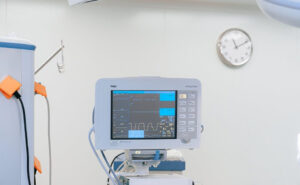Angiogram Testing

An angiogram involves the use of X-ray imaging and a contrasting agent to visualize the blood flow through the arteries and identify any abnormalities. It is a commonly recommended procedure to assess the health of the heart and to determine the necessity of further treatment.
While angiograms have proven to be invaluable tools in diagnosing cardiovascular diseases, it is essential to establish the right timing for this procedure. A responsible and careful approach can help minimize unnecessary risks, while ensuring timely detection and treatment of heart conditions. Therefore, it is crucial to understand when one should consider having an angiogram.
Heart Disease Concerns
The primary indication for an angiogram is when a person’s symptoms raise concerns about potential heart disease. Typical symptoms include chest pain, shortness of breath, unexpected fatigue, or irregular heartbeat. These symptoms may be a result of blocked arteries restricting blood flow to the heart muscle, causing angina or even a heart attack. If these symptoms are persistent or become increasingly severe, an angiogram becomes a reasonable course of action to evaluate potential issues.
Another situation that may warrant an angiogram is if a stress test or other non-invasive diagnostic methods indicate an increased risk of coronary artery disease (CAD). Non-invasive tests, such as an electrocardiogram (ECG) or an echocardiogram, can provide valuable preliminary information, but an angiogram provides definitive visualization of the arteries. An angiogram can confirm or rule out the presence of CAD, clearly demonstrating any blockages that may require intervention.
Furthermore, individuals who have a family history of heart disease should seriously consider having an angiogram as a preventive measure. A strong genetic predisposition increases the risk of developing heart-related conditions, even without exhibiting notable symptoms. In such cases, an angiogram can detect any potential issues early on, allowing for a proactive approach to managing the condition and preventing complications.
What Are The Risks?
However, it is crucial to note that an angiogram is not without risks. As a minimally invasive procedure, it is generally considered safe, but the use of contrast agents and exposure to X-ray radiation carry inherent risks. Therefore, the decision to undergo an angiogram should involve a careful evaluation of the benefits versus the potential risks, which should be discussed thoroughly with a healthcare professional.
In summary, an angiogram is a valuable diagnostic tool for detecting and evaluating heart conditions. It is typically indicated for individuals experiencing symptoms such as chest pain, shortness of breath, or irregular heart rhythms. Additionally, individuals with a family history of heart disease or those at an increased risk of coronary artery disease may also benefit from this procedure. However, the decision to proceed with an angiogram should be a collaborative effort between the patient and their healthcare provider, weighing the potential risks against the benefits. Ultimately, timely detection and treatment of cardiovascular conditions can help improve outcomes and ensure a healthier future.
Need a consultation? Contact Milner Vein and Vascular »
